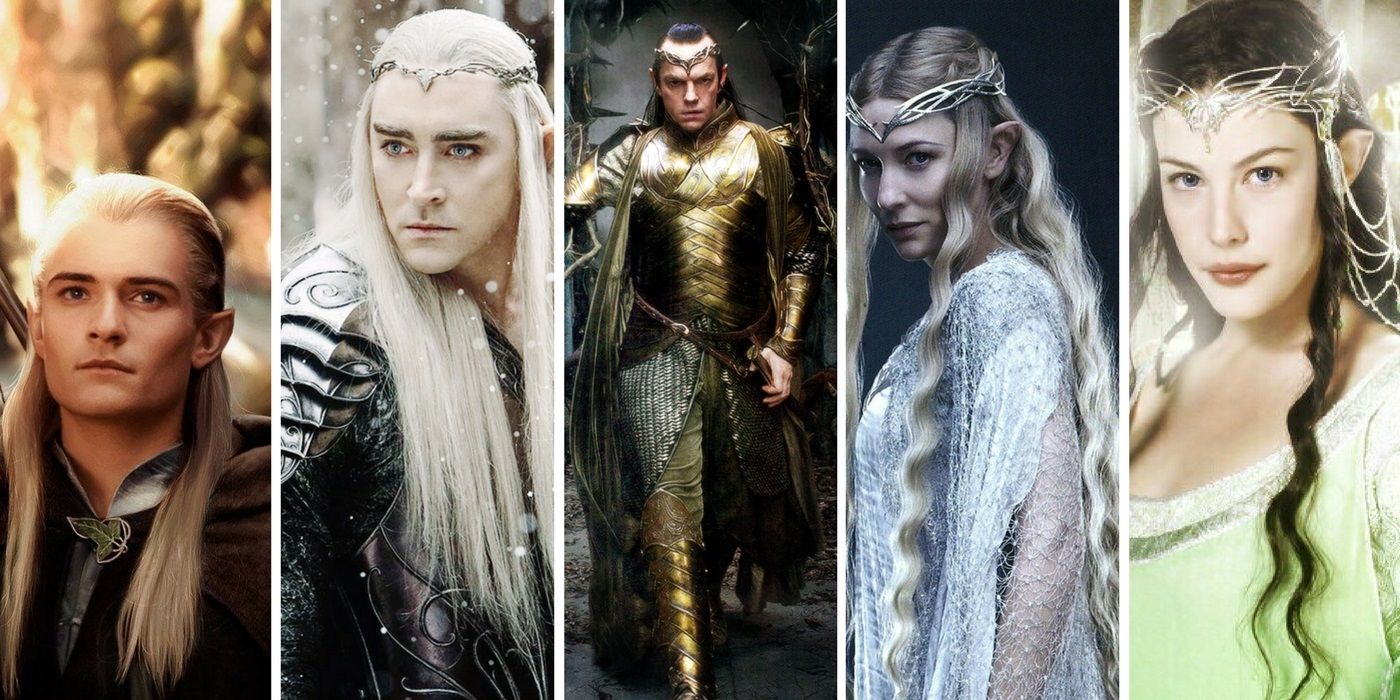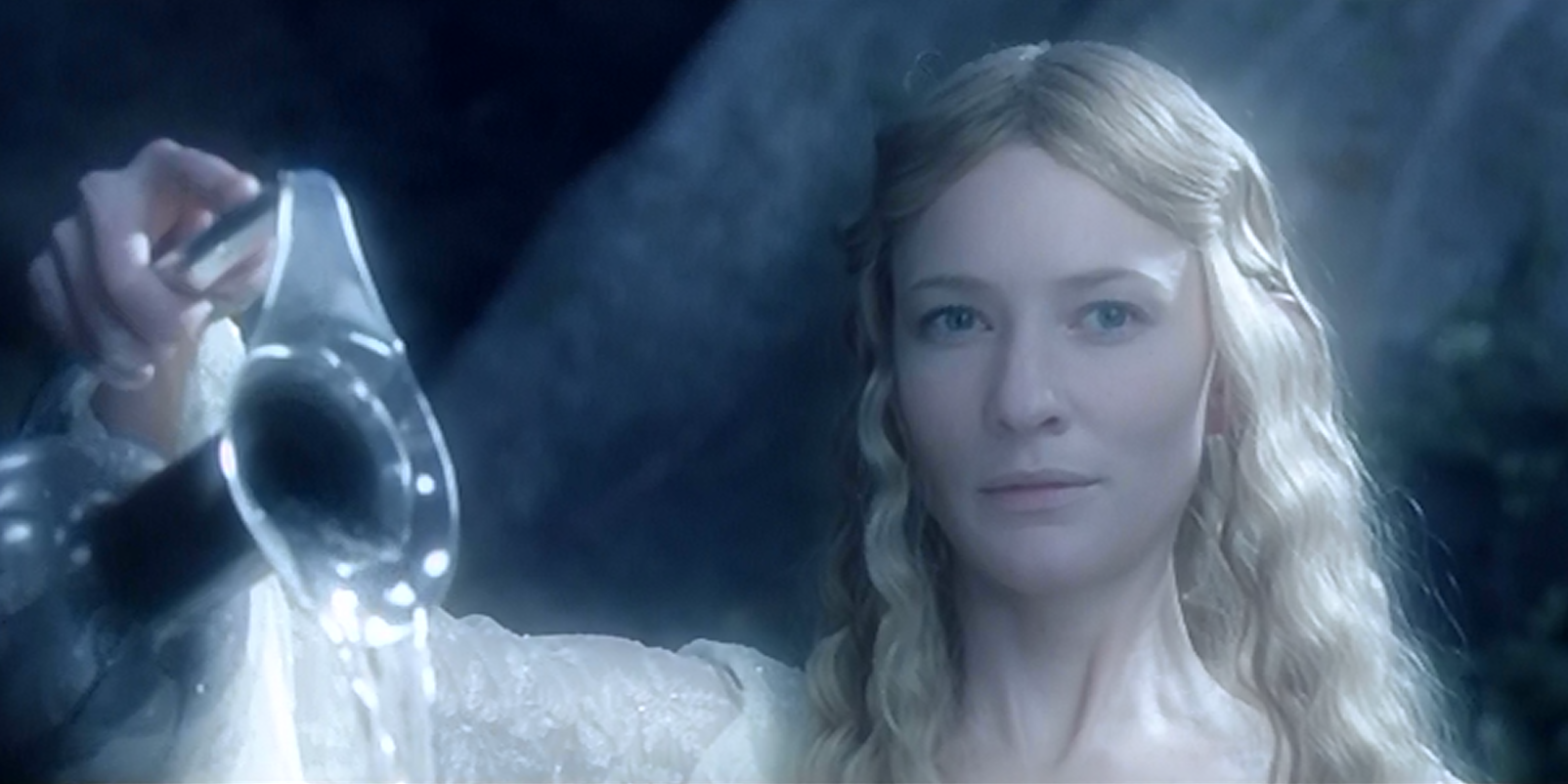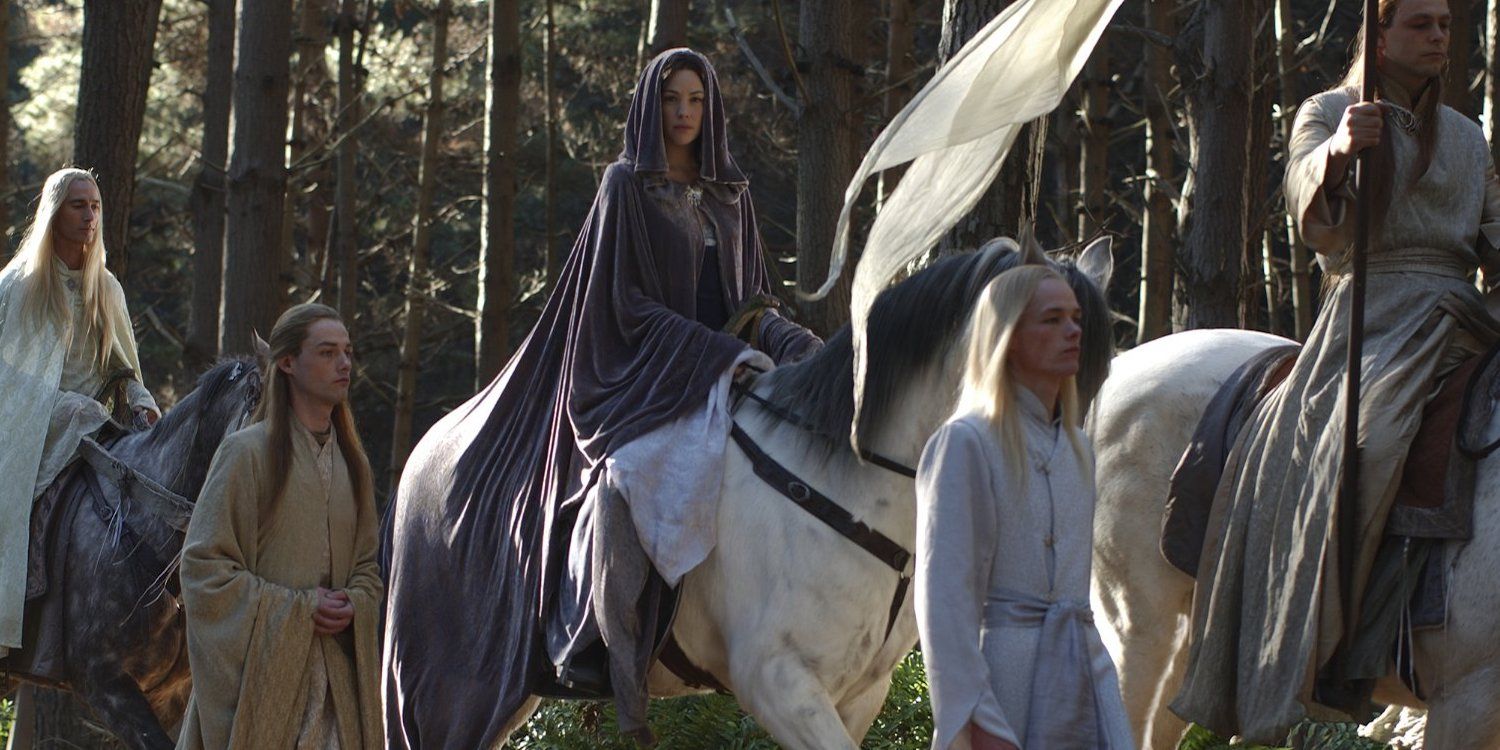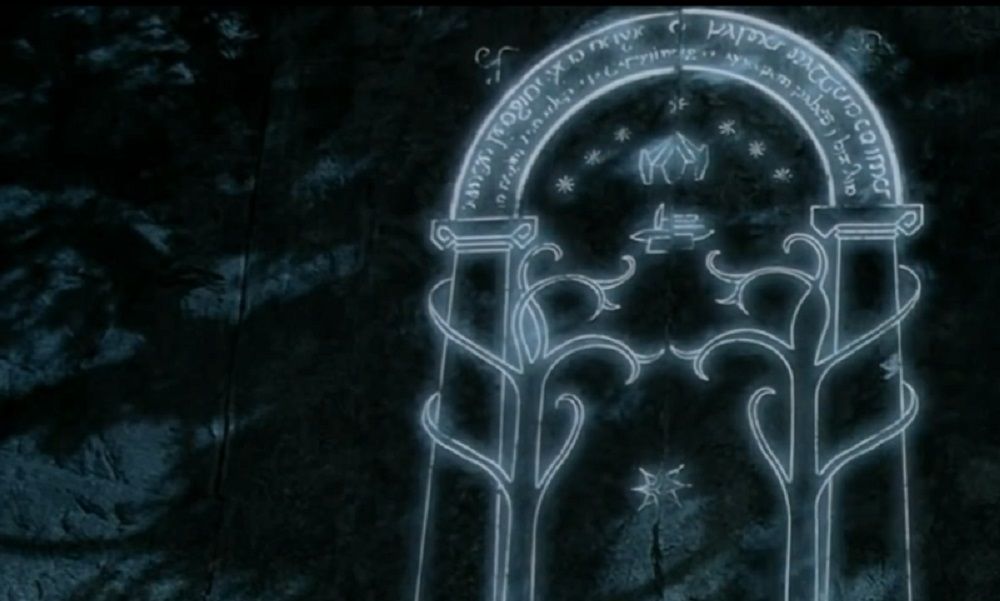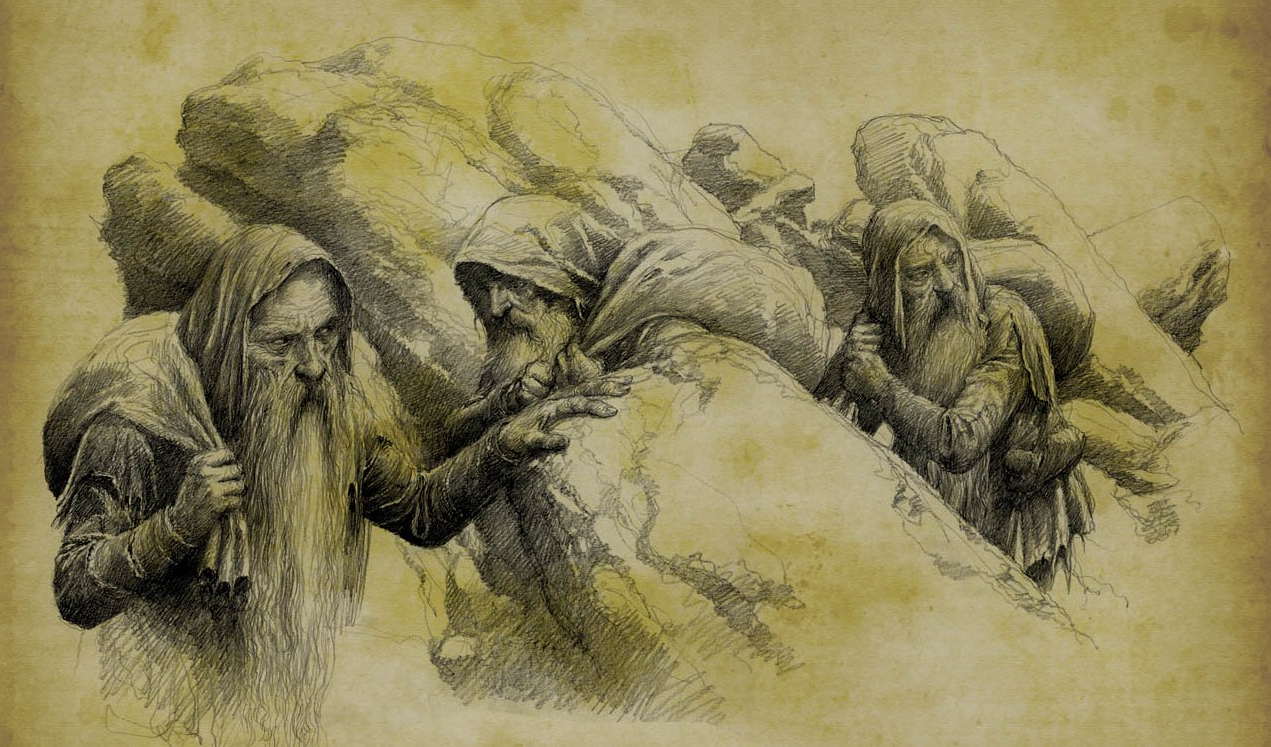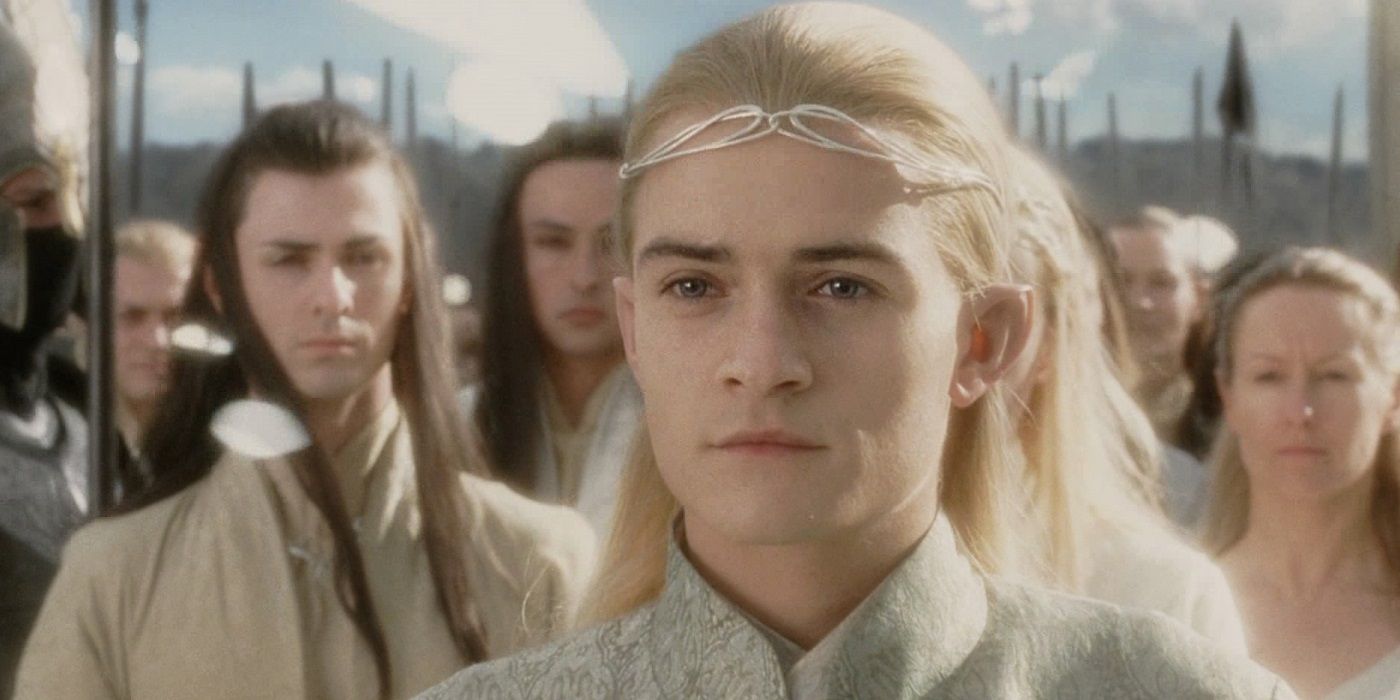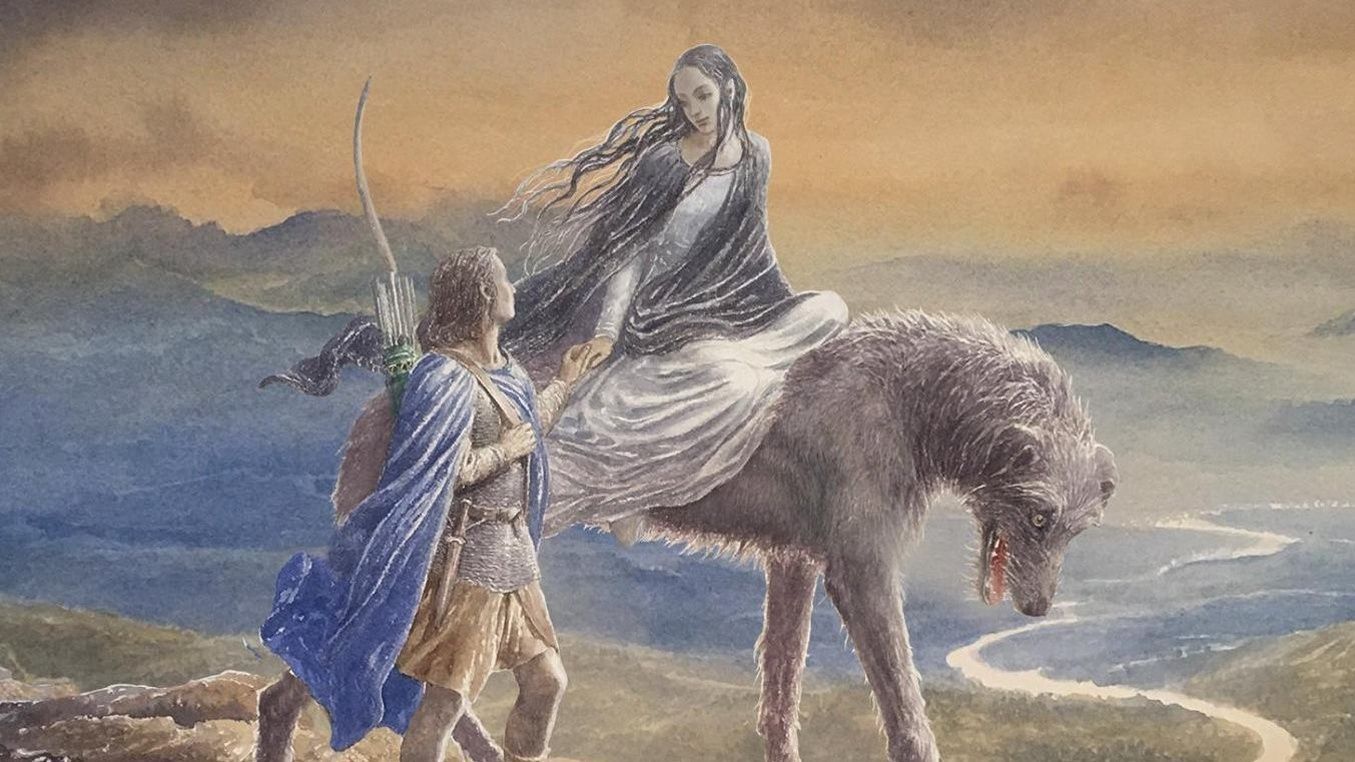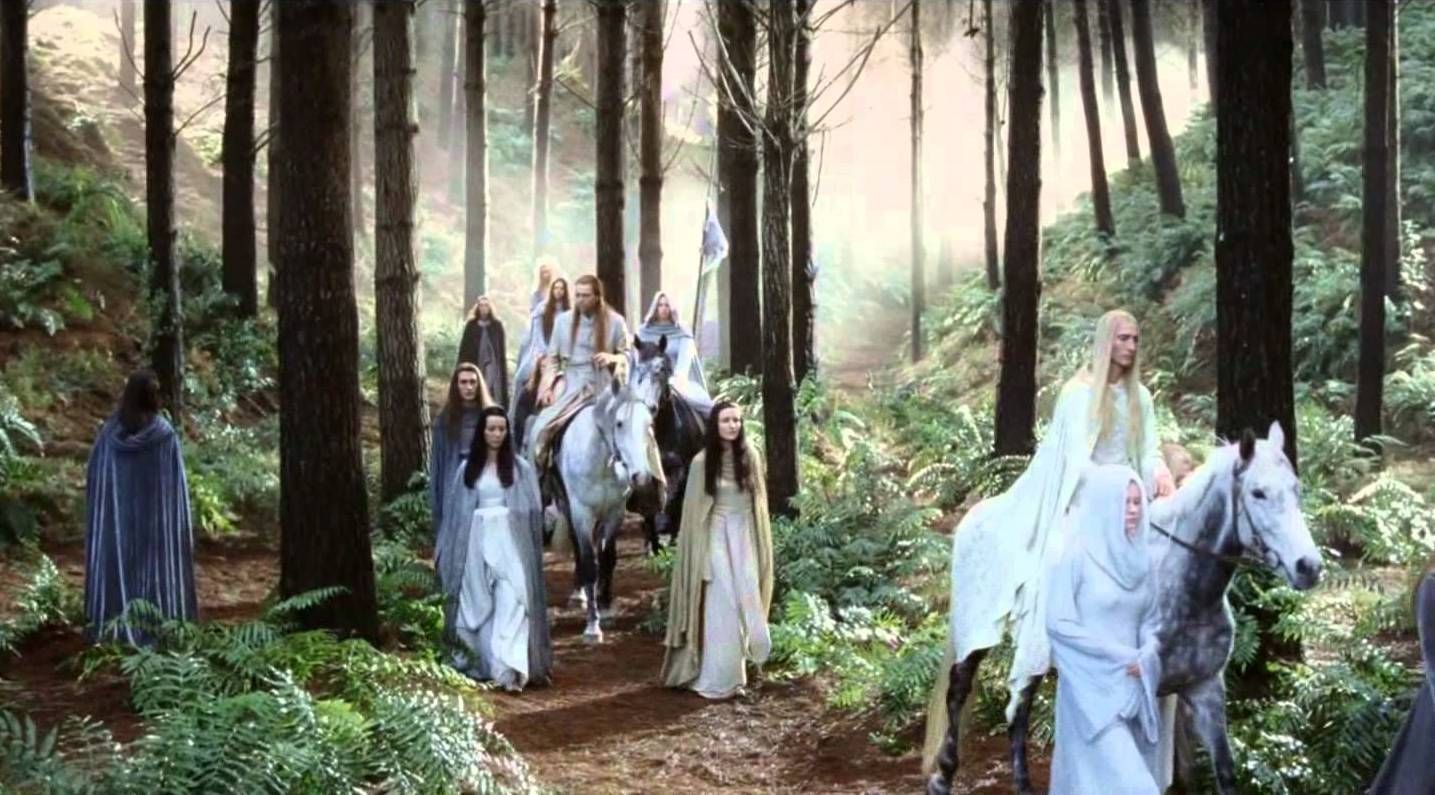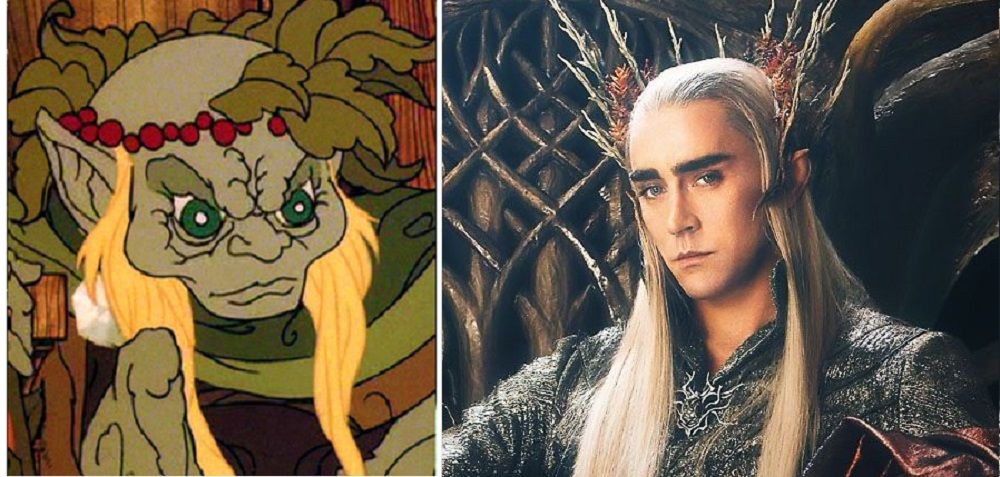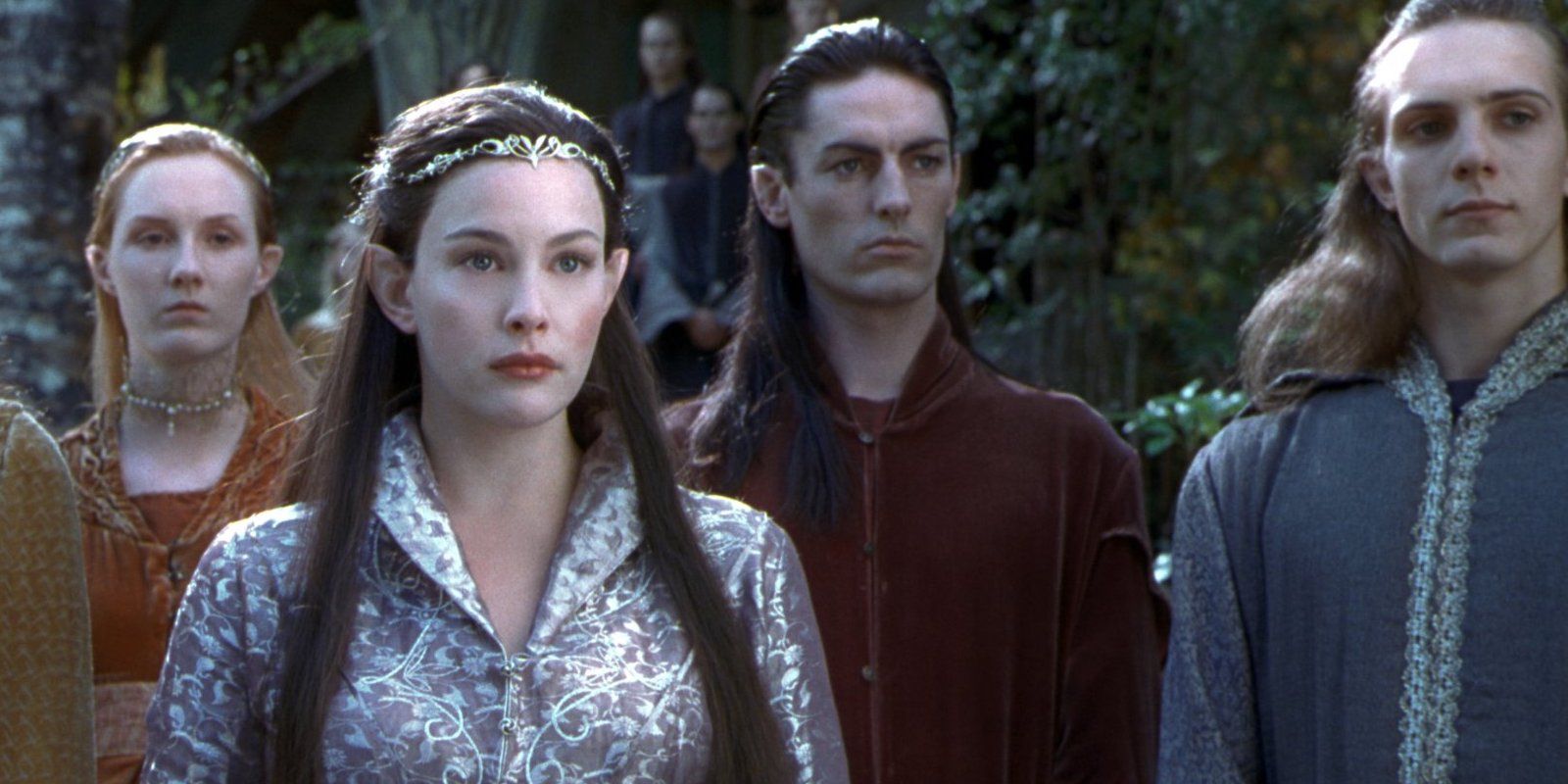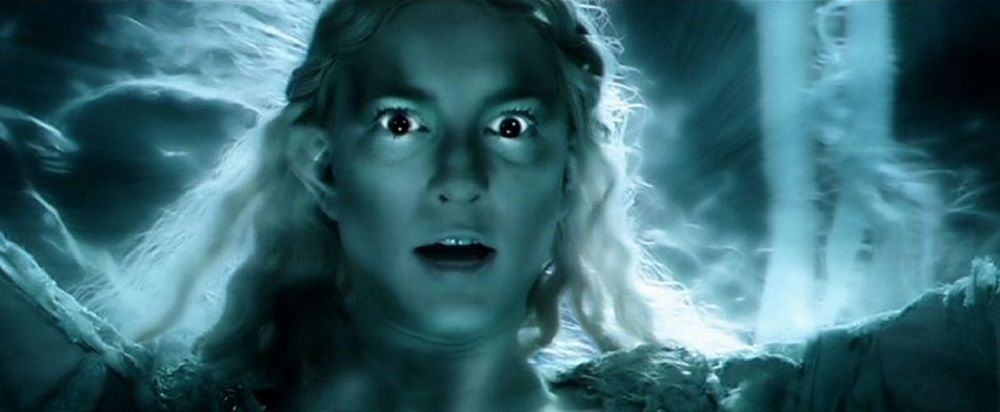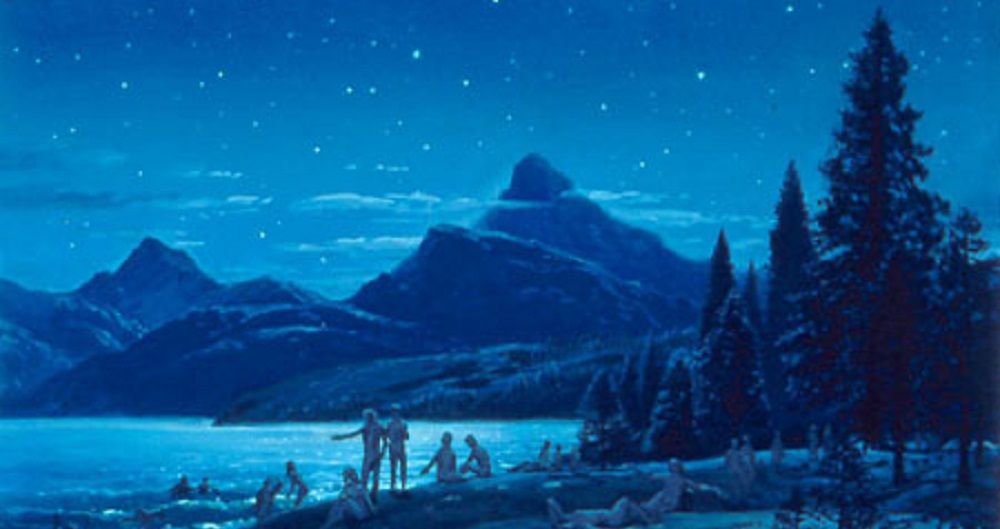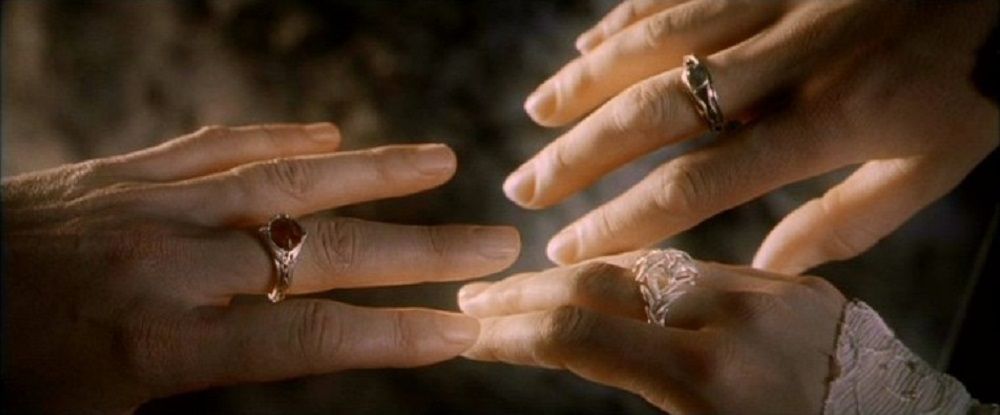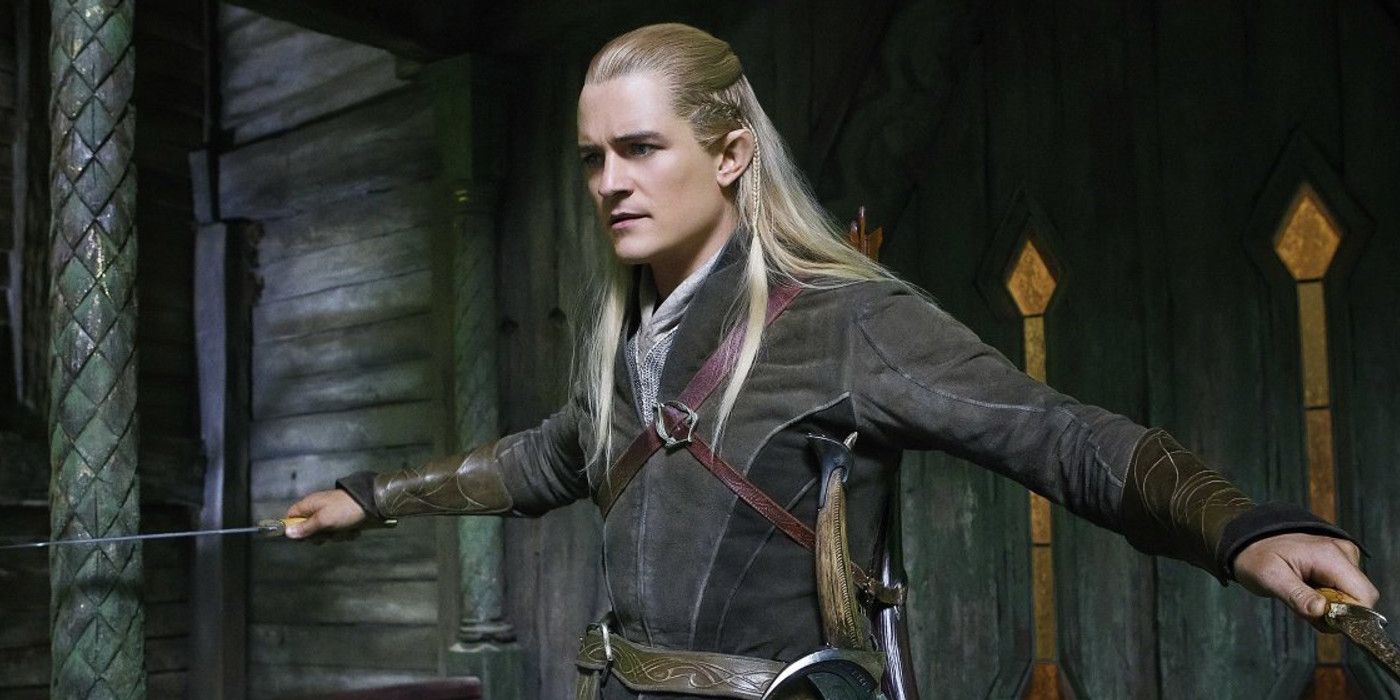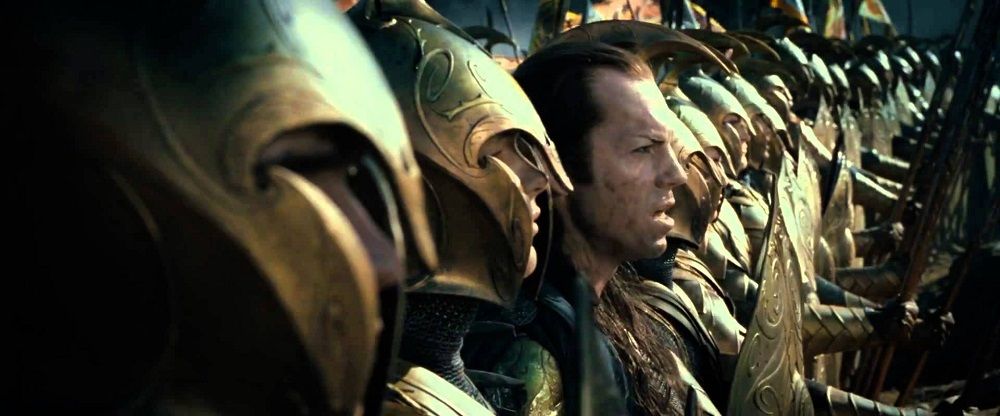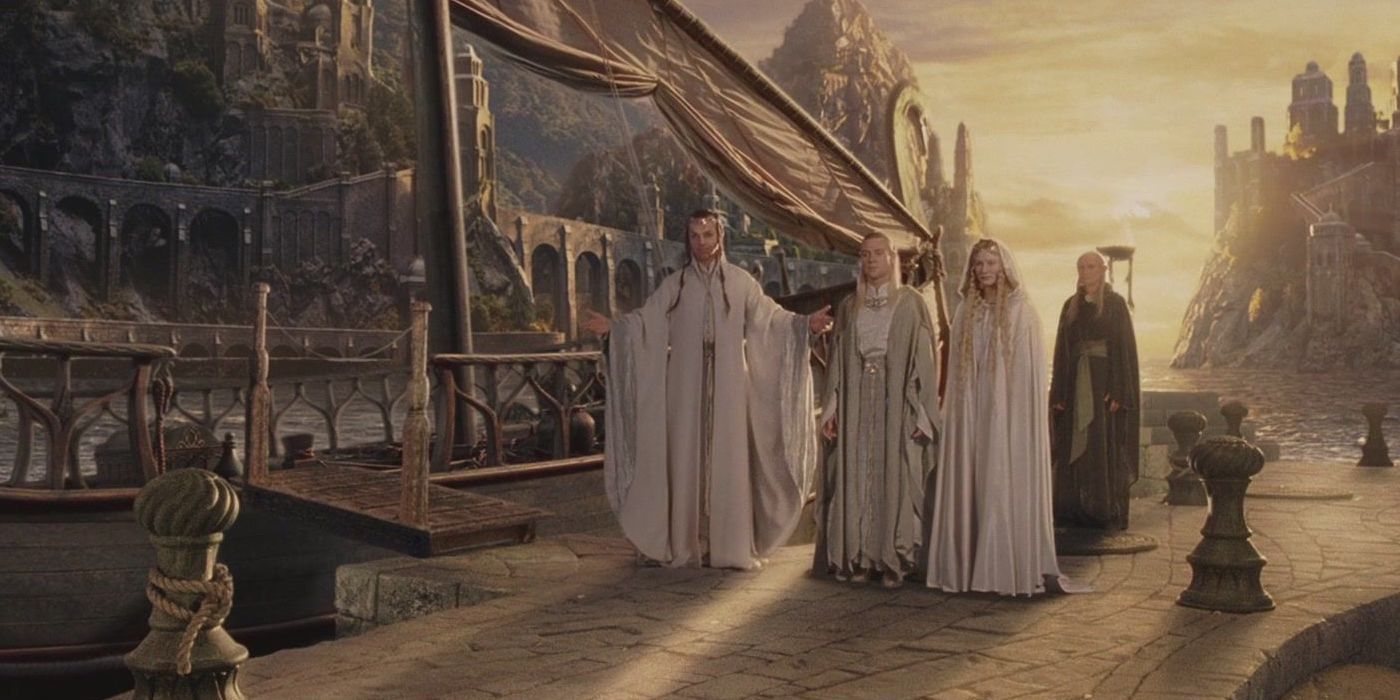Immortal, ethereal, and stunningly beautiful, the Elves of Middle-earth capture the imagination of audiences in a way few other fictional races ever have.
Many people believe that the mythology of Middle-earth is centred around those infamous Rings of Power and the Hobbits from The Lord of the Rings. In actual fact, Tolkien’s story opens with the literal creation of the Universe and the core of his legendarium begins and ends with the Elves.
The fairest of Middle-earth’s creatures, they are generally taller, possess keener senses and are more resistant than Mortal Men. Yet they are far from flawless. Elves can be proud and selfish. Often it is the most skilled and powerful of their number who cause the most anguish and tragedy.
In Peter Jackson’s cinematic adaptation, Arwen, Galadriel, and Elrond shine through as beautiful, wise and brave characters who contribute hugely to the development of Middle Earth. Yet, the trilogy barely scratches the surface on the epic history of the Elves. Characters who do not feature in the movie adaptions at all are crucial to understanding the true nature of Tolkien’s legendarium.
Despite their otherworldly nature, the Elves present us with tales of discovery, family and betrayal which we can all fundamentally relate to and learn from.
Here are 15 Things You Didn’t Know About Elves.
They Are Telepathic
It is said that Galadriel, Lady of the Wood, she can read the hidden secrets of men’s hearts. In The Lord of the Rings, we see her prophetic abilities and her ability to speak into the minds of the Fellowship.
Galadiel is not unique in her abilities. Some suspected that her power was due to her possessing one of the Elves’ Rings of Power, but in actual fact, all of the Elves have the power of direct, telepathic thought-transfer to some extent.
Tolkien explains more in his essay “Ósanwe-kenta”. To support the rich lore of Middle-earth, Tolkien wrote a series of essays. “Ósanwe-kenta” or “Enquiry into the Communication of Thought”, describes how elves can utilize sanwe-latya (which is translated as thought-opening).
In theory, all conscious minds are capable of this but only those with the strongest minds, such as Galadriel, can use it freely.
Galadriel Is Arwen’s Grandmother
Arwen is said to be the most beautiful of the last generation of High Elves in Middle-earth. She is supposed to bear a remarkable resemblance to her famous ancestor Lúthien, along with sharing a similar love story and fate touched with tragedy.
Arwen’s parents are Elrond and Celebrían. Celebrían fell in love with Elrond and bore him three children - two sons and a daughter, Arwen. Through her father, Arwen is the granddaughter of Eärendil the Mariner, great-granddaughter of Tuor of Gondolin, and a direct descendant of the ancient House of Hador. Through her mother, Arwen is the granddaughter of Galadriel and Celeborn.
Celebrían was captured and tortured by orcs while traveling to visit her parents in Lothlórien. Although her sons rescued her and Elrond healed her physically, her spirit was broken and she desired to sail West, leaving her family behind.
Arwen subsequently lived both at Rivendell with her father and Lothlórien with her grandparents.
There’s More Than One Elvish Language
Tolkien was a professional philologist and his stories grew out of his languages. Elvish is not a singular language but rather a family of several related languages and dialects that Tolkien created.
Quenderin was the proto-language of all the Elves. This was then divided into subfamilies of languages. Of the developed languages, Sindarin and Quenya were the most well-developed.
In the Third Age it was Sindarin that was most commonly spoken. When the Elves divided, the Noldor travelled to Middle Earth, where they met the Grey-elves who spoke Sindarin. The Noldor eventually adopted Sindarin and used Quenya primarily as a ritual or poetic language. The Vanyar Elves who stayed behind in Eldamar retained the use of Quenya.
Tolkien created scripts - Sarati, the Tengwar, and the Cirth - to write the languages. Impressively, he even published entire poems in Quenya.
Elves Once Hunted The Dwarves Like Animals
The enmity between the Elves and Dwarves is well-known. Gimli and Legolas’ resentment and verbal sparring slowly turning into mutual respect and friendship is one of the more satisfying character evolutions in The Lord of the Rings.
The races' hatred is often traced back to the conflicts of the Silmarillion and the murder of the Elf King Thingol by Dwarves, over the precious Necklace of the Dwarves, set with an Elf-made gem, the Silmaril. Yet the divide goes back even further than this.
The first Dwarves that the Elves in the First Age came into contact with were the Petty Dwarves. The War of the Jewels describes how the Elves only saw the Petty Dwarves alone in wild places and thought them a smart two-legged animal rather than creatures with souls. So, they hunted them.
Although the other Dwarves did not get on with their lesser kin, when they found out what had been done, they held a grudge against the Elves for hunting and killing such a large number of their kin.
Near genocide is never a good start to race relationships.
They Are Androgynous
The case for elf androgyny is an odd one. In the films, male elves have been depicted with arguably feminine traits - being long-haired and slight - and the female elves are conventionally feminine.
The most often cited reason for the assumption is that elves are meant to be fair of face and do not grow facial hair.
Unlike other shaggier races in Middle-earth, Elf men are usually beardless. There are a few exceptions to this but Elves tend to not grow beards until their third cycle of life or when extreme stress has caused further aging past their normal maturity.
What Tolkien actually said in regard to the difference between the Elven sexes was that: “there was less difference in strength and speed between elven-men and elven-women that had not borne child than is seen among mortals."
Elves were described as fair but that did not mean weak. Anyone who has ever tried to pull a proper medieval longbow knows that Legolas cannot have been lacking in shoulder strength. Rather, it seems that Tolkien saw both sexes as equally fair of face and similarly strong. Androgynous is correct; slight in body is not.
Tolkien Based An Elf on His Wife, Edith
The Tale of Beren and Lúthien is the story of the love of the moral man Beren and the elf-maiden Lúthien. It is one of the most beautiful, poignant and tragic of Tolkien’s tales, and is the story that the rest of the legend pivots around. Tolkien himself regarded the tale as one of the three great tales of the First Age, along with The Children of Húrin and The Fall of Gondolin.
Not only is it integral to the development of his mythos, it is a deeply personal story for Tolkien.
In 1917, while recovering from trench-fever acquired on service, Tolkien watched his wife Edith dancing in the woods amongst flowering hemlock. It sounds like a scene from a romance and Tolkien used it to directly inspire the scene where a lost Beren sees Lúthien dancing in a wood and falls instantly in love.
The similarities between Tolkien and Beren are obvious; both were both orphans and soldiers. As Tolkien himself said, Edith was his Lúthien.
Fittingly, Edith and Tolkien share a gravestone, on which are the names Beren and Lúthien.
Every Elf Has More Than one Name
As with all things Tolkien, Elf naming is far from simple.
Typically an Elf was given a name at birth by the father (ataressë) which usually reflected the individual’s parental descent. When the Elf was a little older, they received a second name (amilessë) which was given by the mother. This name reflected the personality, skills, or fate of the Elf.
A third “after-name’’ (epessë) was given to the individual in later life as a form of honour or title. At times, an Elf would also choose a “self-name” (kilmessë).
Finally, after their exile to Middle-earth, most of the Elves chose a Sindarin name. This name was usually a translation or variation of their Quenya name, as Sindarin became the language they spoke day-to-day.
Although their "true names" remained the first two, an Elf was usually happy to be referred to by any of their given names.
In The Animated Hobbit, Elves Are Uglier Than Goblins
The 1977 animated The Hobbit movie from Rankin/Bass is a rather different beast to Peter Jackson’s The Hobbit Trilogy.
The film was aimed at children, with bright animation and a light-hearted tone. The story was simplified and several parts omitted, to make room for the inclusion of multiple musical numbers. Although largely well-received, the most controversial changes are considered to be the liberties taken with character designs.
Gollum is depicted as more frog-like in appearance than he is in descriptions from the books and Smaug is rather hairy for a dragon (due to his description in the novel as cat-like). Other minor changes include how Gandalf is depicted with a hood rather than a hat, and Elrond having a beard. Perhaps the most inexplicable change is the depiction of the Wood Elves of Mirkwood.
Legolas’ father, Thranduil, is depicted as green-skinned, leaf-covered, squat, and bony; a stark contrast to the tall, silver-haired warrior played by Lee Pace in the live-action movie. It’s a little jarring. They do give him blond hair, however, so we can recognize him.
Elves aren't fully grown until age 100
Elves are naturally immortal. Tolkien’s concept of immortality is particular, meaning that, due to their connection to Arda, the Elves are bound to it until its end. Although the Elves age, they are immune to disease and can heal wounds that would kill a mortal man. However, they can be slain or die of grief or exhaustion.
Due to their increased lifespan, they possess a very different life cycle to mortals. By their first year, Elf children can speak and walk. They mature mentally quicker than mortals and hit puberty at fifteen. Conversely, their bodies develop slower than mortals, reaching adult height at fifty and not considered full-grown until a hundred years old.
After reaching physical maturity, Elves do not age conventionally. Eventually, they may grow weary of the sorrows of the world and desire to leave for Valinor.
Galadriel And Gil-galad Are The Most Powerful Elves
Galadriel was born during the Years of the Trees, before the First Age, and is the wisest and mightiest of the Elves in Middle-earth. Tolkien considered her, along with Gil-galad, to be the most powerful of the Elves.
Gil-galad only appears briefly in the Lord of the Rings movie. His death scene was cut so he only appears for a moment in battle and as one of the original ring-bearers. It is an unfortunate disservice to the character.
Gil-galad was the last High King of the Ñoldor in Middle-earth, known as High King of the Elves of the West, King of the Eldar and Lord of the High Elves. He held the highest authority among the Elves he ruled and was respected by both the Ñoldor and the Sindar. He formed the Last Alliance of Elves and Men with Elendil, and he led the undivided Elves to war against Sauron. His death marked the end of the Ñoldor Kingdoms in Middle-earth.
Incidentally, it was Gil-galad who possessed the seeds of mellyrn, or mallorn, which only grew in Númenor. The seeds wouldn't grow in his land so he gave them to Galadriel. She carried them with her, finally planting them and naming the land where they grew Lothlórien.
The First Elf
Eru Ilúvatar is the single omnipotent creator in Tolkien’s universe. He has been existing eternally in the Timeless Halls and possesses the Flame Imperishable in his spirit with which he creates life.
First Eru created the Ainur, divine spirits, and Eä, the universe. Then he promised the coming of The Children of Ilúvatar, who would be Elves and Men (the Incarnates, possessing both souls and physical bodies).
Elves were created to awaken first and Men would be many thousands of years later.
Imin was the first Elf who awoke and one of the three Elf-fathers. His spouse was Iminyë, who awoke next to him. ‘Imin’ means ‘one’ and the clan of followers that he adopted were named Minyar, or "firsts."
The other original clans in Cuiviénen were the Tatyar 'Seconds', and the Nelyar 'Thirds', named as expected to match with the other Elf-fathers: Tata "Two" and Enel "Three."
The Three Elf Rings Of Power
The Rings of Power were twenty magic rings intended by Sauron to seduce the rulers of Middle-earth to evil. However, Sauron only forged the One Ring. Nineteen of the rings were made by Celebrimbor, and the Elven-smiths of Eregion. Sixteen were made with the disguised, insidious, input of Sauron.
Yet, the Three Rings of the Elves were never touched by Sauron and created by Celebrimbor in secret. Their purpose was to preserve the beautiful Elven domains, to aid in healing and to resist evil. However, they were still linked to the One Ring and when Sauron created it, the Elves were forced to hide the rings as whoever wore the One Ring could sense the thoughts of the Elves who wore the Three.
The Three Rings are named: Narya, Ring of Fire; Nenya, Ring of Adamant; Vilya, Ring of Air.
Nenya is the ring that was held by Galadriel and seen by Frodo. Narya was held first by Gil-galad, who later gave it to Círdan and then to Gandalf. Finally, Vilya was held first by Gil-galad, who later gave it to Elrond. Each Ring has particular properties and specialities.
3. Legolas Might Not Be Blond
Legolas is arguably a minor character in The Fellowship of the Ring but Orlando Bloom’s smoldering Elven archer became an immediate fan favorite.
Surprisingly, his character is one of the most disputed. We know that Legolas is a Prince of the Woodland Realm, a master bowman, and serves as an integral member of the Fellowship of the Ring. Apart from these facts, his age and even his appearance are the subject of controversy.
Legolas is a Sindar Elf, who normally possess dark brown or black hair. The Vanyar, one of the original groups of High Elves, were known for having blond hair. In fact, Galadriel’s famous golden hair was due to her Vanyarin heritage.
Legolas himself is not extensively described by Tolkien. His father Thranduil was blond, so many assume that Legolas must have been blond as well. This is, of course, how Peter Jackson depicts him in his adaptations but it is not necessarily correct.
He may not have been blond but it is indisputable that Legolas’ long, luscious locks contributed to his cinematic popularity.
They Are The First Kinslayers
There is a perception that Elves are perfect. They are certainly more beautiful, accomplished, and wise than us mere mortals. Yet their superior skills lead to even more epic mishaps than could possibly happen to Men.
Fëanor was a Ñoldorin elf born in Valinor. He is considered to have been made the greatest in body and mind than any of the Children of Ilúvatar, as a skillful craftsman, gem-smith, and warrior. Yet he was riddled with flaws and his pride and selfishness led to some of the most harrowing events the race of Elves experience.
Fëanor created the Silmarils, three matchless gems made from the essence of the light of the Two Trees of Valinor. The first Dark Lord, Melkor, coveted the light and destroyed the Two Trees, eventually also killing Fëanor’s father and stealing the gems.
Melkor had fled to Middle-earth and Fëanor determined to follow him. To do so, Fëanor needed boats to make the perilous crossing. Only the Teleri had boats, which they refused to give over to Fëanor as they had no desire to travel to Middle-earth and thought his quest folly. Fëanor turned on the Teleri and murdered many of their fellow Elves to steal the boats, thus making him the first Elf to kill an Elf.
Their Souls Will Consume Their Bodies
The Children of Ilúvatar exist in two parts: they have a soul or spirit named “fëa” which comes from the Secret Fire of Ilúvatar, as well as a body or “hröa” which is made out of the physical material of Arda.
According to the Elves, the fëa is nearly powerless without the body and the hröa would die without the spirit. In the case of the Elves, their bodies are hardier than mortals and their spirit in better control. This explains in part why they are functionally immortal.
When an Elf dies, the fëa leaves the hröa and is called to the Halls of Mandos, where it is judged. After a time of waiting, the fëa may be reincarnated into an identical, new-born body.
Alternatively, a fëa might decide to stay in Mandos until the end of Arda, or even be denied the chance to reincarnate, if they have led an evil life.
Due to the Marring of Arda, the Elves living in Middle-earth suffered a weakening of their hröa over long periods of time. This waning would ultimately cause their fëa to consume their bodies and for them to become like wraiths.
For this reason, the Elves of Middle Earth look West to travel to Aman, the Blessed Realm, where they can live forever.
---
Do you have any Elf trivia to share from the Lord of the Rings? Leave it in the comments!

